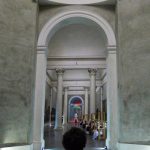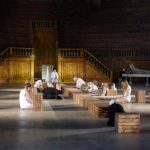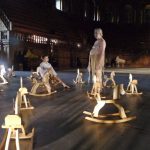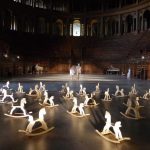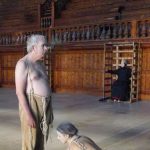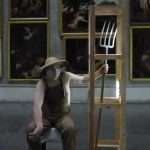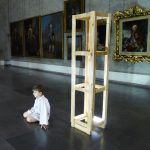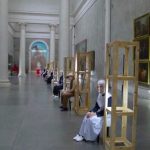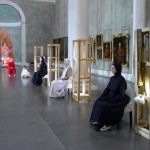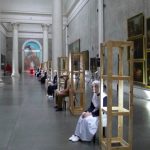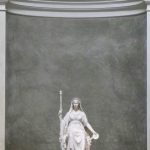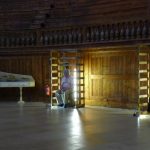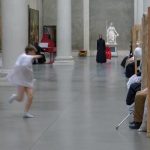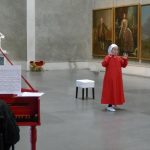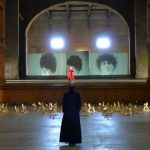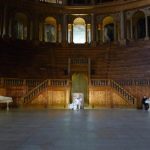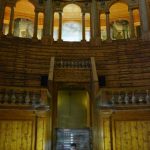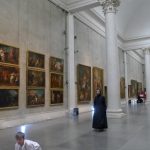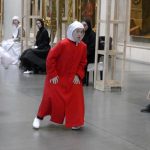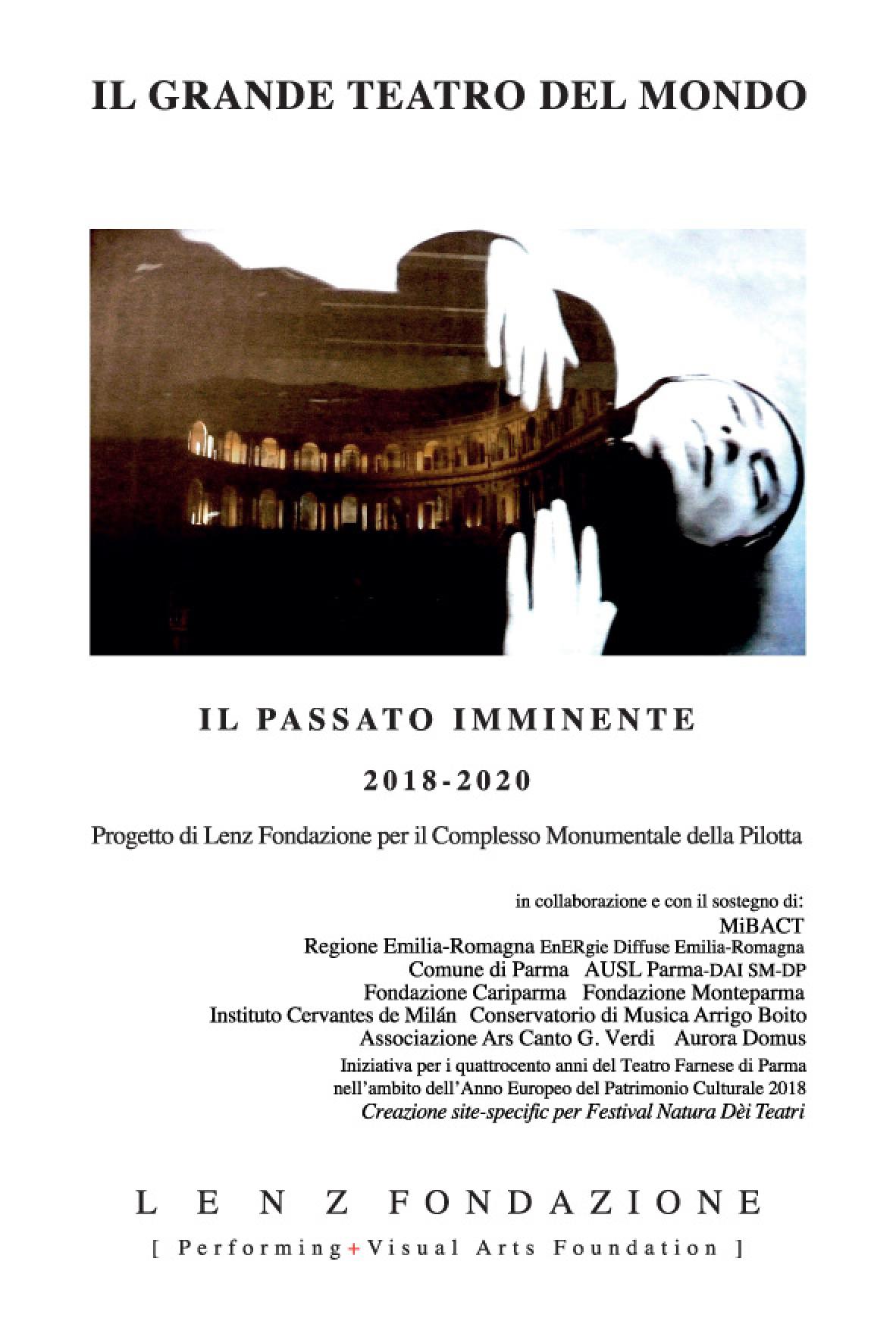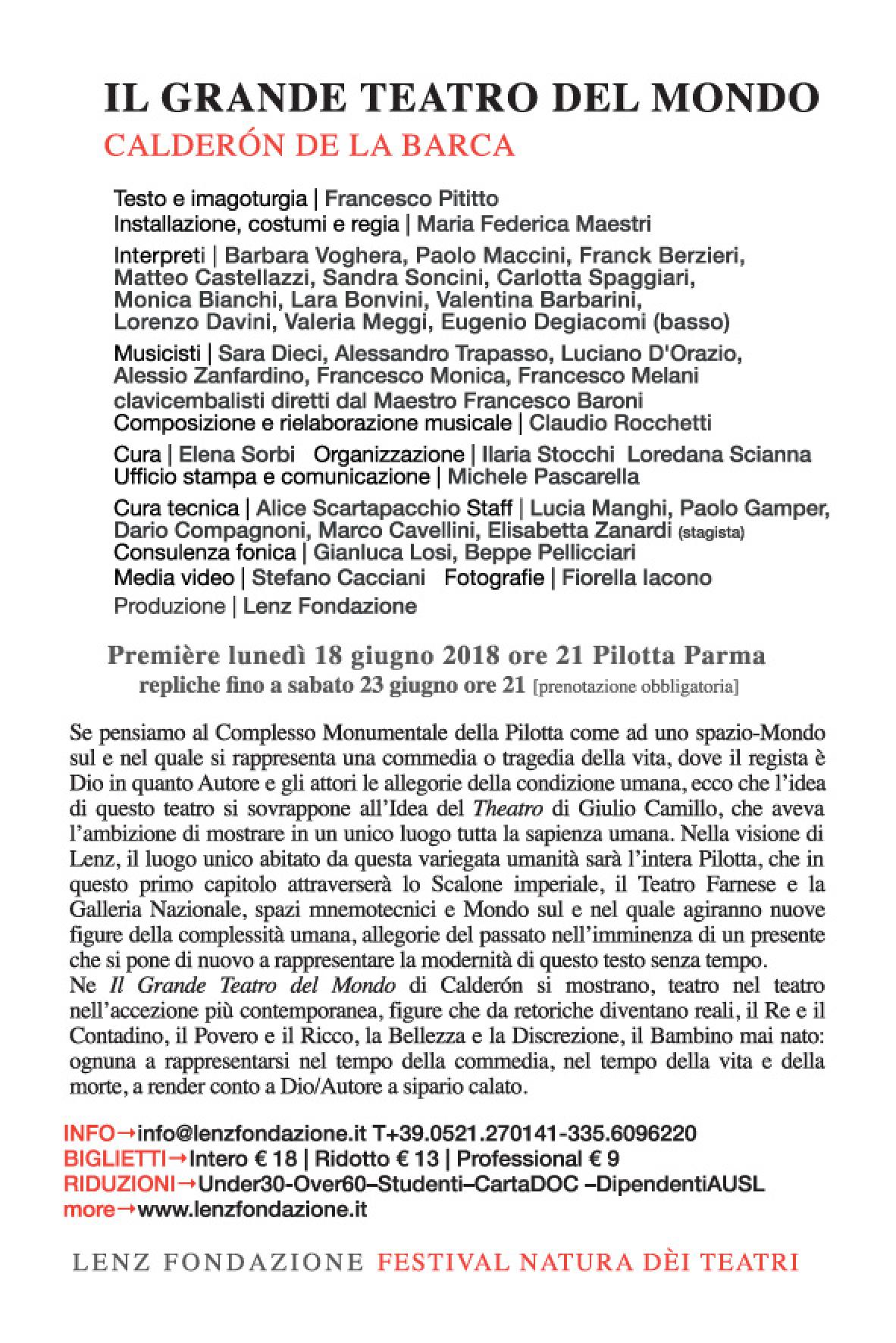
THE GREAT THEATER IN THE WORLD (The Great Theatre of the World)
IMMINENT PAST |THE GREAT THEATER OF THE WORLD
Three-year project 2018-2020
Triptych on the works of Calderón de la Barca
Installation project realized inside the spaces of the Pilotta Monumental Complex of Parma divided in three years:
2018 THE GREAT THEATER OF THE WORLD
Sacramental play
2019 LIFE IS A DREAM
Sacramental play
2020 LIFE IS A DREAM
Theological-philosophical drama
Project for Parma Capital of Culture 2020
The baroque philosophical theological drama perfectly represents the core issue that gives the entire project its name: the imminent past. The Farnese monument between historical era and contemporaneity, dramaturgy confining life and dream into the same space-time (and vice versa) and the relationship between urban space, collective use and active memory make up an hypothetical synthetic view as well as a project for the capital of the future. The perception of individual time through multiple artistic forms (space installations, projected images, live performances, musical dramaturgy between baroque, modern and contemporary) enhances that common time – together with common space, the city – needed to define community identity and new perspectives.
The Pilotta Monumental Complex can be that common space hosting the various periods of collective and individual history, as the inclusive facility of the many faces of the City (Polis). Active participants to the project through workshops will be students of the Toschi High School for the Arts and from other city schools, from the Arrigo Boito Music Conservatory and the various Choirs, University students (the University of Parma is a contributing member of Lenz Foundation), the students of the Cinema District as documentarians for the whole experience. Each phase of the project will have access to advanced technological equipment to document the work in progress and the most advanced video and sound technology will be used, particularly for site-specific activities.
Pilotta Museum Complex
THE GREAT THEATER OF THE WORLD (THE GREAT THEATER IN THE WORLD)
Video installation + performance
From Calderón de la Barca
Text and imagoturgy | Francesco Pititto
Installation and direction | Maria Federica Masters
Music | Claudius Rocchetti
Performers | Lenz Foundation’s Ensemble
In collaboration with the Pilotta Museum Complex, AUSL_DAI SM-DP
THE GREAT THEATER IN THE WORLD – teaser
THE GREAT THEATER IN THE WORLD – full video
It raises a whirl of emotions. Physical, spiritual, and of the mind. And visions, that open the eyes and urge echoes of memories and words, of places and stories, of past and present. Between dizziness of light and shadow, it touches the heart and the mind. It wraps around us, it involves us, as far as space and inside of us, like a large embrace that captures everyone and everything.
Giuseppe Distefano, Artribute, 2 July 2018
Once again, Lenz brings to life the hidden and the unconfessed of the venue and makes of it the main source of light […] For Pititto and Maestri the Farnese monument is the dramaturgy that holds life and dream in the same space-time, between historical era and contemporaneity, personal fulfillment and collective memory. An encyclopedic embrace of diversities, of the possibilities of human beings. With wide open shut eyes.
Matteo Brighenti, Double zero, 28 June 2018
It is a performance at times moving and at times entertaining in its paradoxes and the repetition of age-old schemes, in the irony of destiny, the revolving roles […] And it is truly thrilling being able to enter these spaces outside of the opening hours, glimpse at the paintings “washed out” by the spots lighting the actors’ positioning and discover strong shadows, while looking at such convincing characters that they seem to have materialized outside of these oil canvases after almost 400 years.
Matteo Bergamini, Exibart, 25 June 2018
A vision capable of draining the baroque spell of its literary place of origin, as well as the physical place that has given new shape to it, to give us back an alienated dramaturgical evocation in whose interstices, among varied and repeated visual projections, flashed Claudio Rocchetti’s sharp sound compositions and electronic renditions, with the alienating countermelody of the many harpsichords scattered throughout the scene.
Alessandro Rigolli, Music Journal, 26 June 2018
Though preferring aesthetic research, Lenz distinguishes itself for a strict political connotation, etymologically speaking, that turns away from touring and large audience kind of theater to reactivate the history of abandoned places, of rejected humanity, of neglected tradition, however without waving the flag of urban renewal, social theater or modernization of the classics.
Giulio Sleep, Paper Street, 14 July 2018
Pititto and Maestri propose the distortion of metatheater as gravitational space where individuals are the elementary particles, whose motion is constant, casual and necessarily drawn to meet/clash, and where narration is not flat and continuous, but created by and strictly through interaction.
Daniele Rizzo, Persinsala, 29 June 2018
A direction and dramaturgy procedure capable to effecting syntheses of troubling beauty, as if it were guided by the alchemist instinct of “coniunctio oppositorum”, unleashing occult, latent energies […] This work of Calderon-Pititto is a theatre of sacred and simple solemnity, timing the entrance of the actors to the stage with the opening of two doors: the cradle and the grave.
Franco Acquaviva, Curtain, 2 July 2018
Calderon de la Barca turns the oneiric dimension into a path of moral purification. Pititto and Maestri resort to it to offer a thought similar to the one Polonius formulates while observing Hamlet’s “madness”: there’s method in the madness that is our existence.
Enrico Piergiacomi, Theater and Criticism, 16 July 2018
An event of extremely refined expression for the standpoint of idea and staging, among the main stops, cognizance “stations” as in a sacred performance […] superb multiplying of theater within theater.
Valeria Ottolenghi, The Gazzetta di Parma, 21 June 2018







